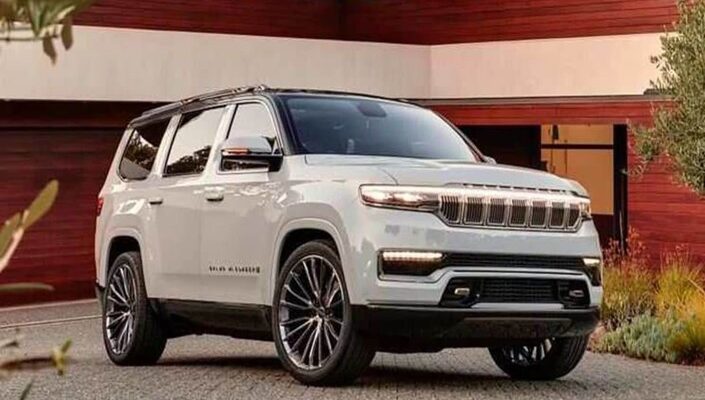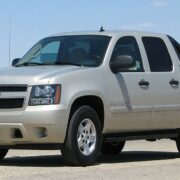
The development stage of the SUV market, which started in the mid-50s of the twentieth century, very successfully coincided with the start of the development of 4×4 vehicles by the Jeep company. All this ultimately resulted in the appearance of the Wagoneer at the end of 1962. The car became a follower of the morally obsolete Willys Jeep Wagon and a progenitor for two pickups – the Jeep Gladiator and the Jeep Honcho.
Recently, the Jeep Wagoneer and its version, the Grand Wagoneer, have been revived and regained their popularity in the US market. The Indy Auto Man car experts invite all SUV enthusiasts to walk together through the model history up to the present day.
SJ Generation
The first generation of Jeep Wagoneer turned out to be the longest-lasting, as it was produced between 1962 and 1991. The car was first demonstrated in 1962 as a full-size station wagon on a frame body, first with rear-wheel drive and then with all-wheel drive. The body structure has not changed throughout all 29 years of production.
The SUV has not changed, which one cannot say about the companies that produced it. First, Willys Motors took over the production, and then it came under the patronage of the parent organization Kaiser-Jeep. From 1970 to 1987, Jeep was produced by American Motors Corporation, and for the last years, SUVs have been assembled under the auspices of Chrysler Corporation.
Unlike the very spartan Land Rovers of that time, the Jeep Wagoneer SUV was positioned as a luxury car from the first day of production. The basic package included air conditioning, interior lighting, a built-in radio, and a height-adjustable steering wheel. Today, such options are common for almost every car, but in the 60s, this was out of the ordinary.
XJ Generation
With the onset of 1984, American Motors Corporation updated the body. This is how the more compact Jeep Wagoneer XJ was born and marked the appearance of the second generation. It was supposed to replace the seemingly outdated SJ SUV, but suddenly, the company decided to continue producing the first generation in parallel with the second.
The Jeep Wagoneer XJ lasted from 1984 to 1990. During this period, the first generation was awarded the prefix “Grand” to the name. In 1984, a simplified version of the second generation, the Wagoneer Custom, went on sale. The SUV lost its wooden exterior and received conventional stamped wheel rims, thanks to which it became cheaper.
In 1986, the SUV in the XJ body underwent a slight restyling: the radiator grille, front optics, and instrument panel were changed. A year later, Chrysler Corporation received the rights to produce SUVs. It continued the car manufacture without significant changes: new colors for the body and a rear window wiper appeared.
ZJ Generation
In 1993, 2 years after the end of production of the first generation, the SUV again became a novelty in the automobile market. The triumph lasted only a year, during which 6,378 copies saw the light of day. The model received the designation JZ and was called the same as the first generation after the appearance of the second – Jeep Grand Wagoneer. The SUV received a 5.2-liter V8 Magnum engine and the interior with a unique leather trim with wood. In 1994, Chrysler Corporation discontinued production of the model due to an oil price shock in 1990.
WS Generation
In January 2011, Chrysler Group announced the revival of the Grand Wagoneer name in a flagship 7-seater SUV. Initially, there was a plan to present the car in 2013, but the release was postponed to 2015. But it was not the final date either – with the arrival of the stated deadline, the release of the new product was postponed to 2018 and then to 2021.
The modern Wagoneer offers a choice of three engines:
- 5.7-liter V8, 392 hp;
- 6.4-liter V8, 471 hp;
- 3.0-liter L6, 510 hp.
In all variants, the SUV has an 8-speed automatic transmission and an electronic range selection system, rear-wheel or all-wheel drive. The adjustable Quadra-Lift suspension supports both manual and automatic control modes.
The 2022 Jeep Wagoneer WS, in the best traditions of the brand, has a frame structure made of high-strength and lightweight steel. The tailgate is made of composite material, which reduces weight and improves fuel economy. Regardless of trim, the new Grand Wagoneer offers the most spacious interior of any American SUV.
The original Jeep Wagoneer can be called a legend of the automotive industry not only in the US but worldwide. At one time, the car took part in setting the trend for those SUVs that we see on the roads today. That’s why a used, latest-generation Wagoneer is an excellent choice for those who want a reliable SUV with a rich history and a modern twist.











